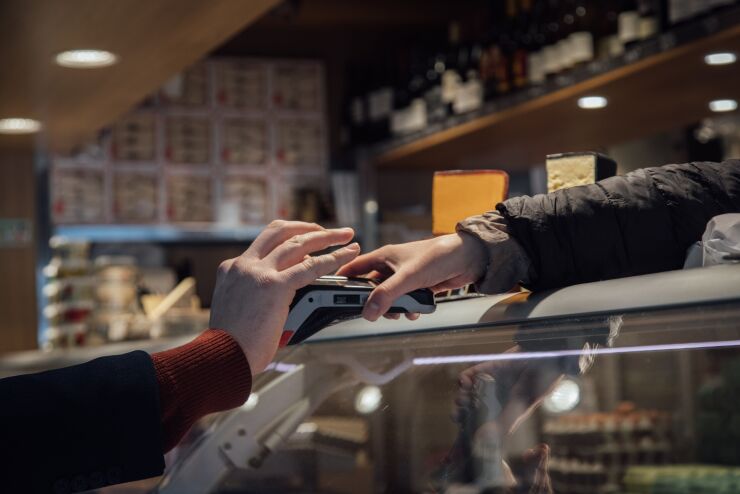
By taking nearly all of the work out of setting up and operating a payment system, several companies are teaming up to attract merchants in multiple countries .
Finaro, an Israeli payment company that has a banking license in the European Union, joined together with Mastercard, Nordic neobank Northmill and digital commerce technology company NMI to launch Tap to Pay mobile payments in Europe. Sweden, Norway and Finland are the first markets the companies are targeting following their launch of the technology
Tap to Pay, or softPOS, enables smartphones to act as portable point of sale devices without requiring any kind of plug-in dongle or other hardware. The technology, which is a couple of years old, has sparked a race among payment firms due to its potential to dramatically reduce merchants' reliance on tools dedicated to collecting payments — any staff member's smartphone likely already has the capabilities to act as a payment terminal. SoftPOS is also more mature than other options to replace traditional point-of-sale terminals such as
The partners' deployment brings the user experience for merchant technology more in line with what they already use as consumers.
"The lines between merchants and consumers are getting blurry from a software perspective," said Marco Salazar, director of payments for Javelin Strategy & Research. "The needs and use cases are different, but the expectation is the same: I push a button to make something happen."
Finaro's partners are using Mastercard's
"You're downloading an app on your phone and then using it to take payments," said Peter Galvin, chief product officer at NMI. "So there's really not that much of a change from the merchant's perspective to any other app."
The collaboration is "one example of how players across the industry are packaging technology and solutions to help deliver the best, most convenient checkout experience to businesses of all sizes and their customers," Mastercard's public relations office said in an email.
SoftPOS has its roots in Mastercard and
"There's an introduction of numerous payment methods that weren't readily available in the past, when payments were primarily card-based," Salazar said. "Fast forward to today and there's a recognition that there is a shift from traditional card terminals. That will take time, but the card networks are investing in these new capabilities."
Payment companies are under pressure to help merchants improve sales and transaction approval rates while lowering the cost of payment, Salazar said, adding that's driving the card brands to pursue services strategies, which focus on providing value-adds in addition to payments.
There is a market of existing consumers that are already using contactless payments, making the migration to softPOS easier. More than 71% of consumers used a mobile wallet in 2022, reports
And 44% percent of all consumers aged 18-23 use mobile wallets to make payments, according to
"A lot of younger people don't carry a physical wallet around with them anymore," Galvin said.
The low adoption among older consumers means merchants will still need to support other methods, though with fewer static terminals, said Ruben Nielsen, vice president of sales and business development for the Nordics at Finaro.
"There's going to be some older consumers or consumers who want to use cash, and you have to respect that," Nielsen said.
And Finaro and its partners are also launching in the Nordics, a region that tends to be an early adopter of technology. Ten percent of consumers there prefer to make mobile payments at the point of sale, compared to 5% who prefer cash, according to
This compares to Germany, for example, where mobile payments make up about 4% of the total payments, according to
"We've only launched in the Nordics so far, so we'll see as we go into Germany or elsewhere," Nielsen said. "There may be a trend or a way of usage that we've not yet taken into consideration."






